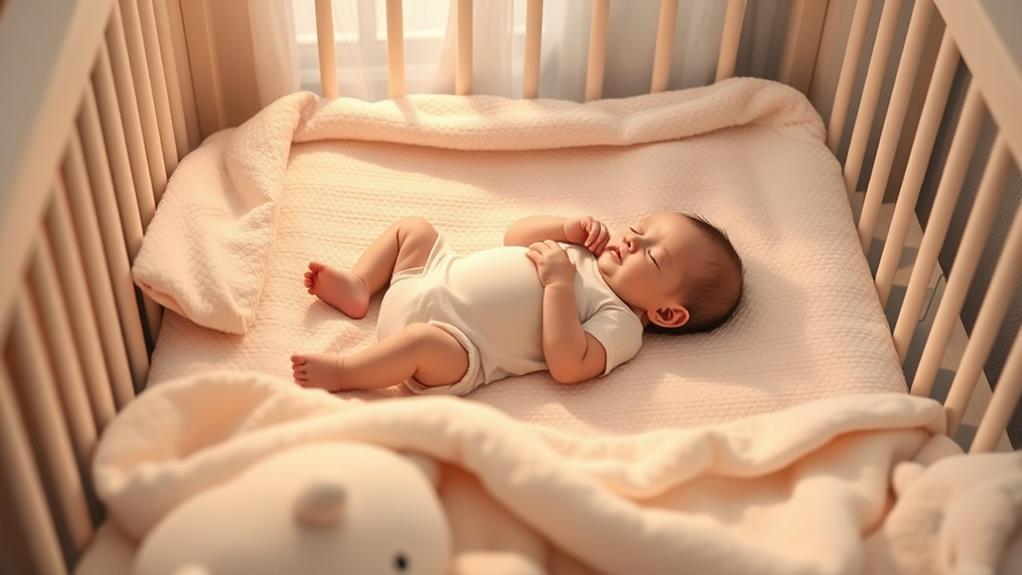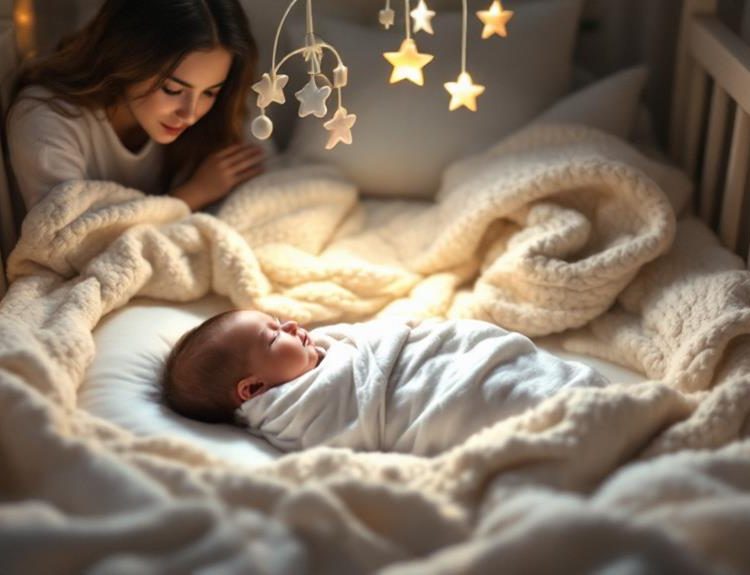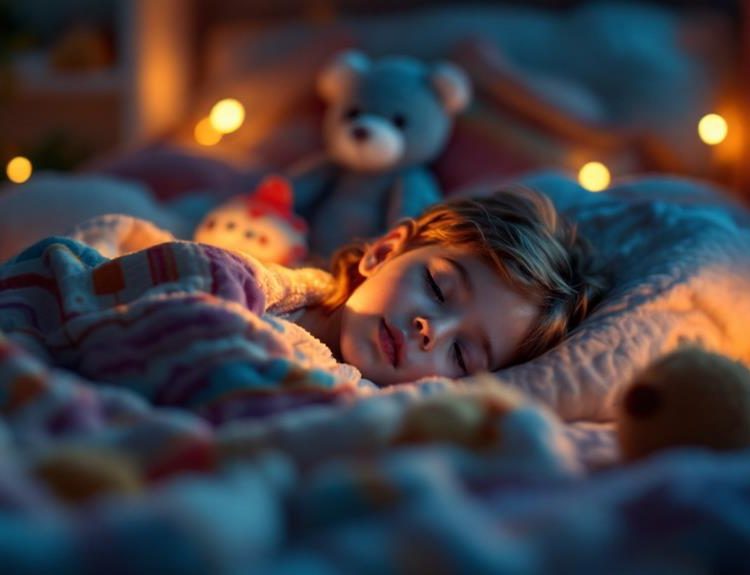When it comes to your baby's sleep, knowing the safest practices can make a world of difference. You might be surprised to learn that placing your infant on their back is the most effective way to reduce the risk of Sudden Infant Death Syndrome (SIDS). This simple action keeps their airways clear, but there's more to consider beyond just positioning. As you explore the nuances of baby sleep safety, you'll uncover essential guidelines and common misconceptions that could influence your approach. What other factors should you be aware of to ensure your baby sleeps safely?
Importance of Back Sleeping
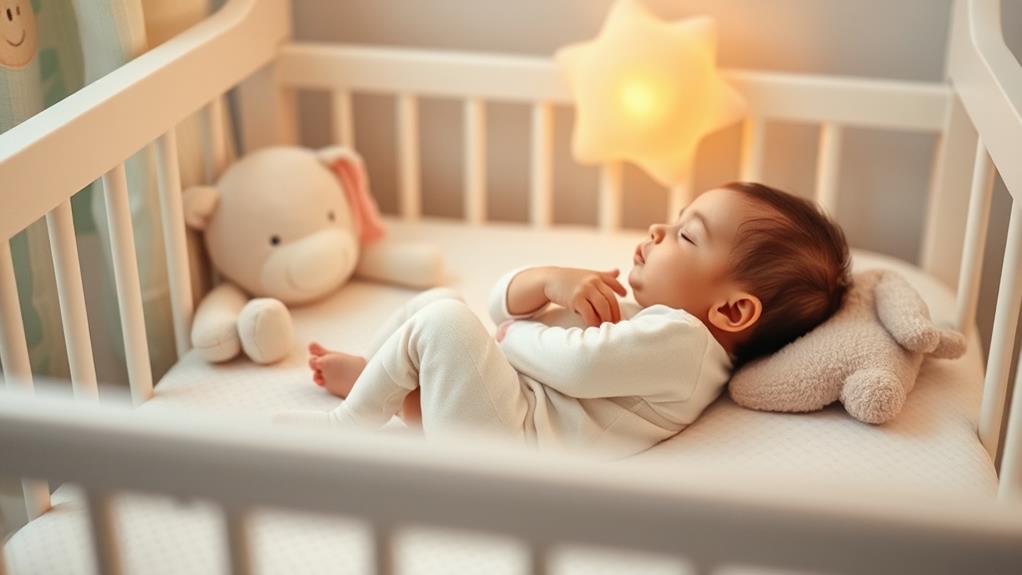
When it comes to baby sleep safety, many parents may not realize just how crucial back sleeping is. Placing your baby on their back to sleep can significantly reduce the risk of Sudden Infant Death Syndrome (SIDS).
When you lay your baby down on their back, their airways stay open and clear, making it easier for them to breathe. This simple action can provide peace of mind for you as a parent.
You might wonder about other sleeping positions, and while side or tummy sleeping may seem cozy, they can pose risks. Babies who sleep on their stomachs are at a higher risk of rebreathing their own carbon dioxide, which can lead to suffocation.
The safest sleep environment is one where your baby is on their back, in a crib with a firm mattress and no soft bedding or toys.
Research Findings on Sleep Safety
Recent studies underscore the critical importance of safe sleep practices for infants. Research shows that babies who sleep on their backs are significantly less likely to suffer from Sudden Infant Death Syndrome (SIDS). In fact, the risk drops by up to 50% when infants are placed on their backs to sleep. This finding is crucial for parents who want to ensure their baby's safety during sleep.
In addition, researchers have found that the sleep environment plays a big role in safety. For instance, soft bedding, pillows, and toys can increase the risk of suffocation. Keeping the crib clear of these items helps create a safer sleep space.
Moreover, room-sharing without bed-sharing is recommended, allowing you to keep an eye on your baby while still providing a separate sleeping area.
It's also worth noting that babies who sleep in a smoke-free environment are at a lower risk for sleep-related issues. These findings highlight the importance of creating a safe sleep routine.
Expert Recommendations for Parents
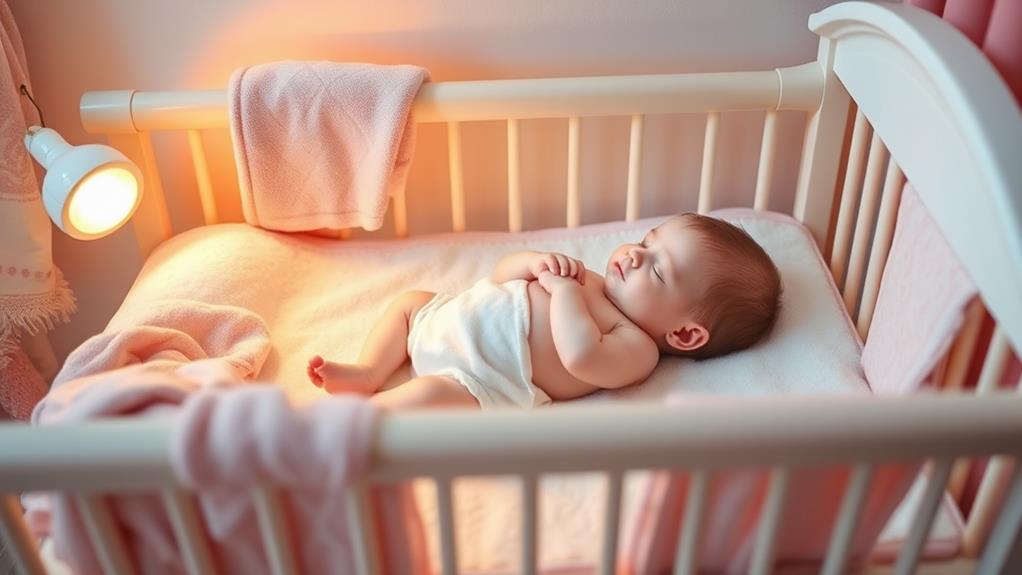
Experts consistently emphasize the importance of following safe sleep guidelines for your baby. To ensure your little one sleeps soundly and safely, always place them on their back for every sleep, whether it's for a nap or nighttime. This position significantly reduces the risk of sudden infant death syndrome (SIDS).
In addition to back sleeping, make sure your baby's sleep environment is safe. Use a firm mattress and avoid soft bedding, such as blankets, pillows, or stuffed animals, which can pose suffocation hazards. Dress your baby in light sleep clothing, so they won't get too warm.
Furthermore, experts recommend keeping your baby's sleep area in the same room where you sleep for at least the first six months. This arrangement makes it easier for you to monitor your baby while ensuring they feel secure.
If you're using a crib, ensure it meets current safety standards.
Common Myths About Baby Sleep
Many parents encounter a range of myths regarding baby sleep, which can lead to confusion and anxiety. One common myth is that babies need to sleep on their stomachs to be safe. In reality, research shows that back sleeping significantly reduces the risk of sudden infant death syndrome (SIDS).
Another misconception is that babies will choke if they sleep on their backs. Their gag reflex is very strong, allowing them to safely manage any spit-up while lying down.
You might also hear that swaddling is the best way to keep your baby safe and cozy. While swaddling can help some infants feel secure, it's crucial to stop swaddling once they can roll over to prevent any risk of suffocation.
Additionally, some believe that a baby needs a soft mattress or lots of pillows for comfort. However, a firm, flat sleep surface is recommended to ensure safety.
Lastly, some parents think that if their baby sleeps better in a car seat or swing, it's fine to let them stay there. While it may seem convenient, it's safer for babies to sleep in a designated sleep space like a crib or bassinet.
Practical Tips for Safe Sleep
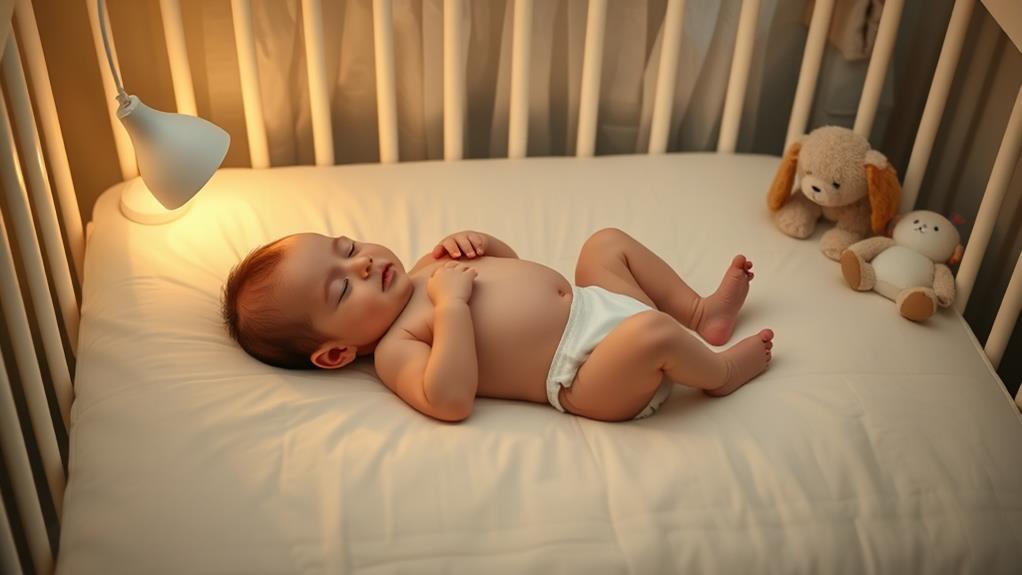
Creating a safe sleep environment for your baby is essential for their well-being. Start by placing your little one on their back every time they sleep, whether it's during naps or at night. This position significantly reduces the risk of Sudden Infant Death Syndrome (SIDS).
Next, make sure the crib or bassinet meets safety standards; it should have a firm mattress and a snug-fitting sheet.
Keep the sleep area free from soft toys, pillows, and heavy blankets, as these can pose suffocation hazards. Instead, opt for a lightweight sleep sack to keep your baby warm but safe.
Room-sharing can also be a great safety measure, so consider placing your baby's crib in your room for the first six months. However, avoid bed-sharing, as it increases the risk of accidents.
Lastly, keep the sleep environment cool and comfortable, ideally between 68-72°F (20-22°C). Regularly check on your baby to ensure they're safe and content, and always trust your instincts—if something feels off, don't hesitate to seek help.

